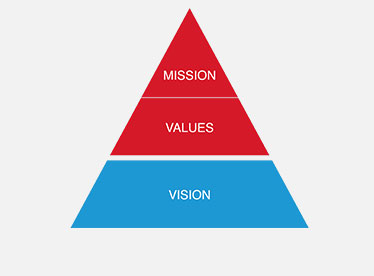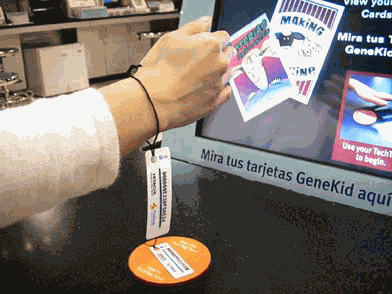-
Products
-
Transportation & Mobility Solutions
Transportation & Mobility Solutions
At Hitachi, we engineer industry-leading transportation and mobility solutions by leveraging decades of knowledge and using high-quality automotive material and components.
-
Energy Solutions
Energy Solutions
We believe the only solution for fulfilling the growing power requirements of industries and society is through a comprehensive portfolio of sustainable energy solutions and delivering innovative high-efficiency energy systems.
-
IT Infrastructure Services
IT Infrastructure Services
Hitachi’s state-of-the-art IT products and services are known to streamline business processes which result in better productivity and a higher return on investment (ROI).
-
Social Infrastructure: Industrial Products
Social Infrastructure: Industrial Products
Within the industrial sector, Hitachi is consistently delivering superior components and services, including industrial and automation solutions, useful in manufacturing facilities.
-
Healthcare & Life Sciences
Healthcare & Life Sciences
At Hitachi, we believe that healthcare innovation is crucial to a society’s advancement. A strong healthcare sector is often considered an inseparable element of a developed society.
-
Scientific Research & Laboratory Equipments
Scientific Research & Laboratory Equipments
Hitachi focuses on extensive research and development, transformative technology, and systems innovation to unfold new possibilities and create new value through scientific endeavors that strengthen the connection between science and social progress.
-
Smart Audio Visual Products
Smart Audio Visual Products
Since 1956, Hitachi audio visual products have provided state of the art solutions to consumers all over the world. It has been our pleasure to design competitive products at the lowest possible prices while maintaining our industry-leading quality standards for your comfort and enjoyment.
-
View All Products
Hitachi Products & Solutions
Hitachi, a technology leader in the U.S., offers a diverse set of products and solutions, and breakthrough technologies for smart manufacturing, green energy and mobility solutions that empower governments, businesses, and communities.
-
Transportation & Mobility Solutions
- Social Innovation Solutions
-
About Us
-
Hitachi in the U.S.A.
Hitachi in the U.S.A.
Discover information about the Hitachi group network across the Americas, upcoming events and sustainability endeavours, CSR policies, and corporate government relations.
-
About Hitachi Group
About Hitachi Group
Explore our leadership team, investor relations, environmental vision, and sustainability goals. Learn how Hitachi is leveraging its research & development capabilities for social innovation across industry verticals.
-
Hitachi in the U.S.A.
- News Releases
- Case Studies
- Careers
- R&D
THE TECH MUSEUM OF INNOVATION IN SAN JOSE IMPLEMENTS
-- Application of the Innovative µ-CHIP at The Tech is Hitachi’s first implementation in North America – --
BRISBANE and SAN JOSE, Calif., -- April 4, 2005 – Hitachi America, Ltd., a subsidiary of Hitachi, Ltd., and The Tech Museum of Innovation (The Tech) in San Jose, Calif., today announced the implementation of Hitachi’s µ-chip as the exclusive RFID technology for the museum’s TechTag-enabled exhibits. The µ-chip technology implementation went live at The Tech on March 29, 2005.
The Hitachi µ-chip offered The Tech an opportunity to substantially lower the cost of its "TechTag" RFID wristbands while highlighting μ-chip technology in the heart of Silicon Valley. The Hitachi µ-chip RFID tag is small and inexpensive enough to meet The Tech’s requirements for short read distance item level RFID tracking applications.
The Tech is the first museum to use disposable RFID wristbands as part of its interactive exhibits. Visitors receive TechTags, pre-encoded and pre-printed human readable wristbands, upon entering the museum’s galleries. During their experience in the museum, visitors wave their wristbands in front of RFID readers at select exhibits to trigger various interactive experiences.
Visitors are encouraged to keep their TechTag as a souvenir, and use it to log onto their own personal websites to extend their museum visit at home. Each guests’ website features their own experiences from The Tech, and also offers additional online-only content. Guests can add to their website by bringing their TechTags back over time for use with new exhibits. No personal identification information of the visitor is recorded.
In making the announcement, Dr. Ryo Imura, executive managing director of the Mu-Solutions Division of Hitachi, Ltd., said, “Hitachi is honored and proud to have worked with The Tech Museum of Innovation in implementing Hitachi’s novel µ-chip RFID technology. The technology developed by Hitachi’s R& D Group is itself innovative and has provided to The Tech a very cost effective solution to enhancing the user experience at the Museum of Innovation.”
Greg Brown, The Tech’s vice president of operations and technology, said, “TechTags are revolutionizing the visitor experience at The Tech, and Hitachi’s innovative implementation of RFID technology is helping to make that possible. Hitachi’s µ-chip RFID technology is small, flexible and inexpensive – the right mix to make TechTags a reality, and extend our educational mission outside the walls of the museum and into people’s homes.”
The Tech’s website also provides links to Hitachi Websites so that visitors can easily learn more about the µ-chip RFID technology in the wristbands. The µ-chip is completely passive; it obtains its power from the interrogation reader’s own radio signal. There are no batteries involved and so the µ-chip’s lifespan is expected to match the typical IC lifespan.
The Hitachi RFID technology has unique characteristics that lend itself to very low-cost RFID tag manufacturing. The µ-chip IC (integrated circuit) is 0.4mm square. The efficiency result is that more µ-chips can be produced using the same amount of silicon. The µ-chip inlets are very durable. Failure rates recorded during the manufacturing process from raw inlet to TechTag have been exceptionally low.
The µ-chip operates at the globally available 2.45GHz radio frequency which is a much higher frequency than typical RFID systems, including recent supply chain RFID applications that use tags that vary in radio frequency depending on individual country regulations. The higher µ-chip frequency permits a smaller and simpler tag antenna design. There are no metallic coils in a µ-chip antenna, only a straight 52mm x 2mm aluminum foil-based plastic strip similar to Christmas tree tinsel. The 2.45GHz frequency provides a very fast 20 microsecond read response time between the reader and the chip.
The µ-chip is secure. Each chip contains a 128 bit unique identification code that is hard coded into read only memory (ROM) during chip manufacture. Any attempt to re-code the ID will damage the chip. Hitachi has provisions and systems in place to never release µ-chips with duplicate IDs, thus ensuring each µ-chip’s authenticity. The unique security attributes of the µ-chip make it an ideal vehicle for ticketing or loyalty program ID device. It is currently being used at the Expo 2005 Aichi in Nagoya, Japan for admission tickets.
The Hitachi µ-chip is named after the 12th letter of the Greek alphabet, which is pronounced “mu” and a commonly used scientific abbreviation to describe one micron, a unit of measure equal to one-tenth of a millimeter. The communication protocol between RFID tag and reader is proprietary to Hitachi, Ltd.







